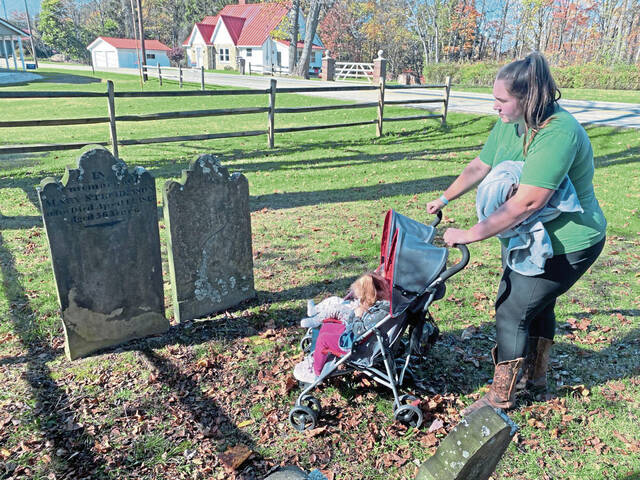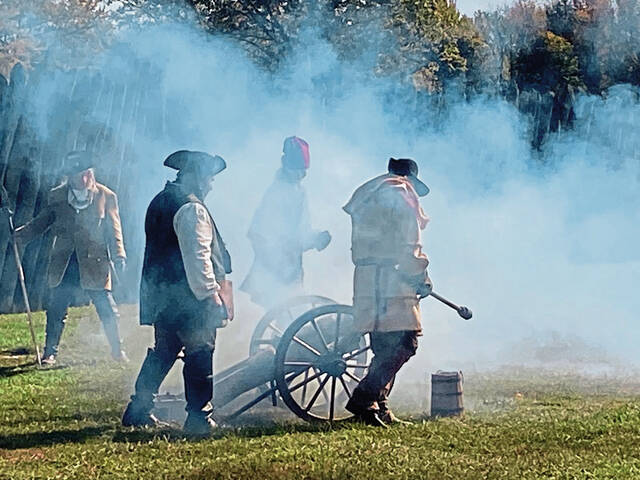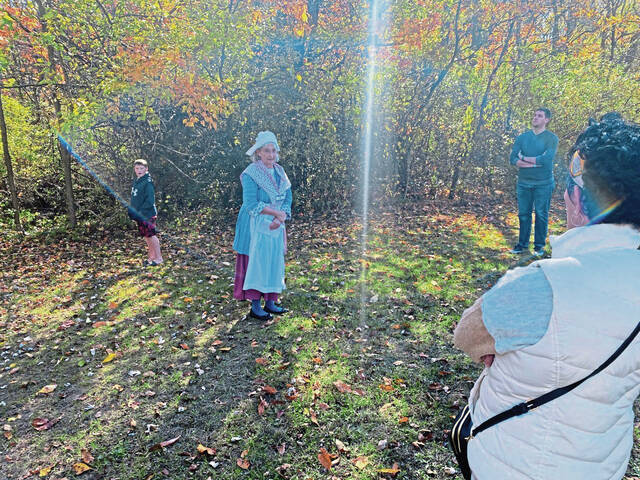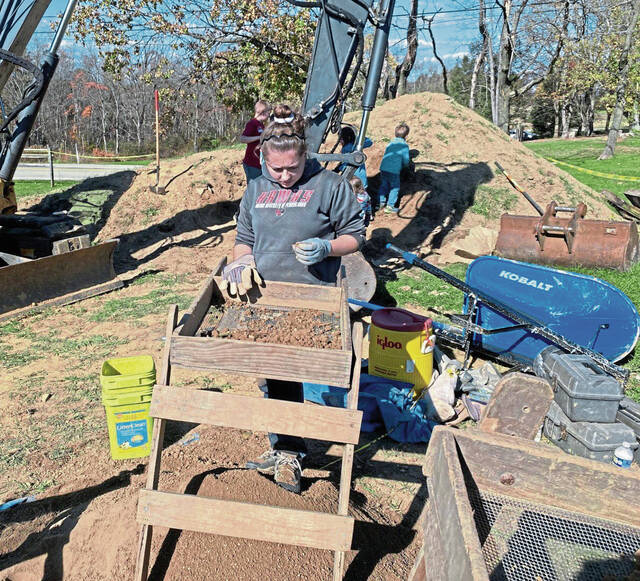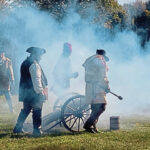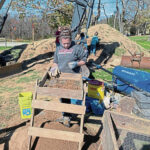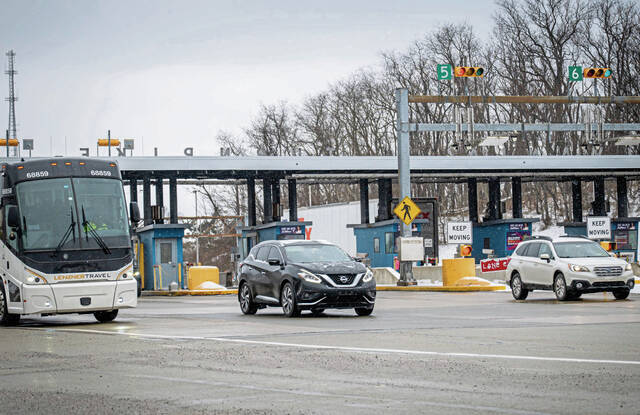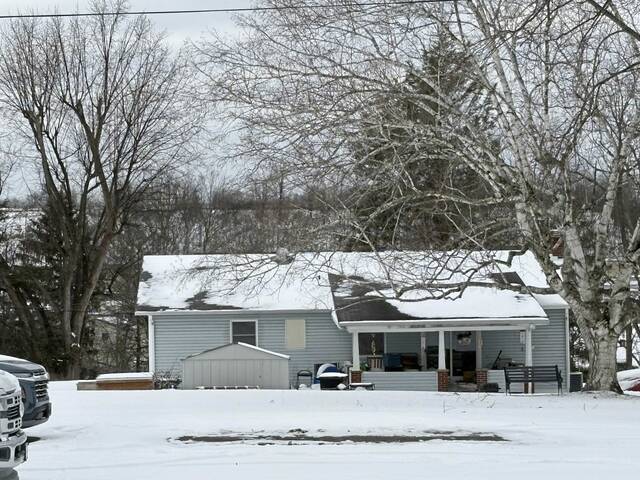To Madeline Irwin of Acme, the chance to take a cemetery tour Saturday afternoon at Historic Hanna’s Town in Hempfield was an opportunity she did not want to miss, even if it meant pushing her double stroller up hilly terrain through the woods.
“It’s such a great family experience. I love it here, I really do,” said Irwin, 22, who characterizes herself as a history buff.
Irwin was among about two dozen people who toured the two cemeteries at the Historic Hanna’s Town site along Hannastown Road, learning about a community cemetery where at least 150 people were buried after the Revolutionary War, said Lisa Hays, executive director of the Westmoreland County Historical Society.
While some likely were buried in woods around a fenced-in cemetery, the engravings on most of the dozen-or-so markers indicate a grave, but most have lost the battle against time and are illegible.
The cemetery tours were part of the Historic Hanna’s Town’s fall celebration.
It featured demonstrations by colonial reenactors depicting members of Proctor’s Militia, also known as I.B.W.C.P. or Independent Battalion Westmoreland County Pennsylvania. The fort and other buildings were open, offering visitors glimpses of what life was like for settlers on the Pennsylvania frontier.
There were crafts, toys, games and other activities for youngsters.
One of the people killed in a raid on Hanna’s Town by Native Americans and their British allies in July 1782 may or may not be buried on the site, Hays said. Peggy Shaw was killed attempting to rescue someone outside the fort and is buried in a Mt. Pleasant Cemetery, Hays said. The grave of the other victim, Isaac Steel, is unknown.
Most of the settlers survived inside the fort, while the raiders burned the village and stole or killed the livestock, Hays said.
While the community cemetery had mostly old graves, with one being as recent as 1915, the Steel family cemetery across Hannastown Road, with a tall obelisk at its center, is being used in the 21st century, Hays said. The historical society and the Westmoreland County Parks and Recreation manager and operate the 180-acre site about six miles from Greensburg.
The Steel family still uses a family cemetery across the road from Hanna’s Town’s community cemetery. Westmoreland County has an agreement with the Steel family, previous owners of land around Hanna’s Town, that they could continue to use the fenced-in family cemetery for burials, Hays said. A most recent family burial was in 2021.
Scott Henry of Greensburg, who portrays a captain in Proctor’s Militia, explained the firing of a gun, what today would be referred to as a cannon, and the various charges it sent hurtling toward the enemy — such as cannon balls, shells exploding in the shells and canister shots spreading small balls at the enemy. A firing crew demonstrated the firing of several shells.
“You see all the hard work the reenactors do. The people take such pride in what they do,” Irwin said.
Reenactors also depicted an execution of a man serving under Gen. “Mad” Anthony Wayne, who was shot for desertion, even though the general had given him a leave of absence during a period of sobriety, only to forget that when he was drinking, Hays said.
An archaeological dig by graduate students from Indiana University of Pennsylvania’s anthropology department is taking place at a site where the historical society has built a foundation for a log house adjacent to the fort. Hays said they hope to get the house under roof before winter.
“It’s a very historically significant site,” Hays said of Hanna’s Town, where various artifacts of colonial life are still being found.


